St. Augustine, Florida, was a popular tourist destination in the 1980s, attracting visitors with its historic architecture, Spanish colonial history, and stunning beaches. The city, founded in 1565, was the oldest continuously inhabited European-established settlement in the United States, and was home to many well-preserved historical buildings and monuments, including Castillo de San Marcos, a 17th-century fort, and the Spanish colonial-style Cathedral Basilica of St. Augustine.
In the 1980s, St. Augustine was undergoing a revitalization and preservation movement, with many of its historic buildings being restored and repurposed for new uses. For example, the city’s oldest hotel, the Ponce de Leon Hotel, was restored and renamed Flagler College, after railroad magnate and hotelier Henry Flagler.
In addition to its rich history, St. Augustine was also known for its beautiful beaches, such as St. Augustine Beach and Anastasia State Park. The city was a popular destination for water sports, including swimming, boating, and fishing, as well as for outdoor activities such as golfing and hiking.
Tourism was a major industry in St. Augustine in the 1980s, with visitors coming from all over the world to experience its unique combination of history and natural beauty. The city was also home to many shops, restaurants, and attractions, including the historic district of St. George Street and the Lightner Museum, which housed a collection of art and artifacts from the Gilded Age.


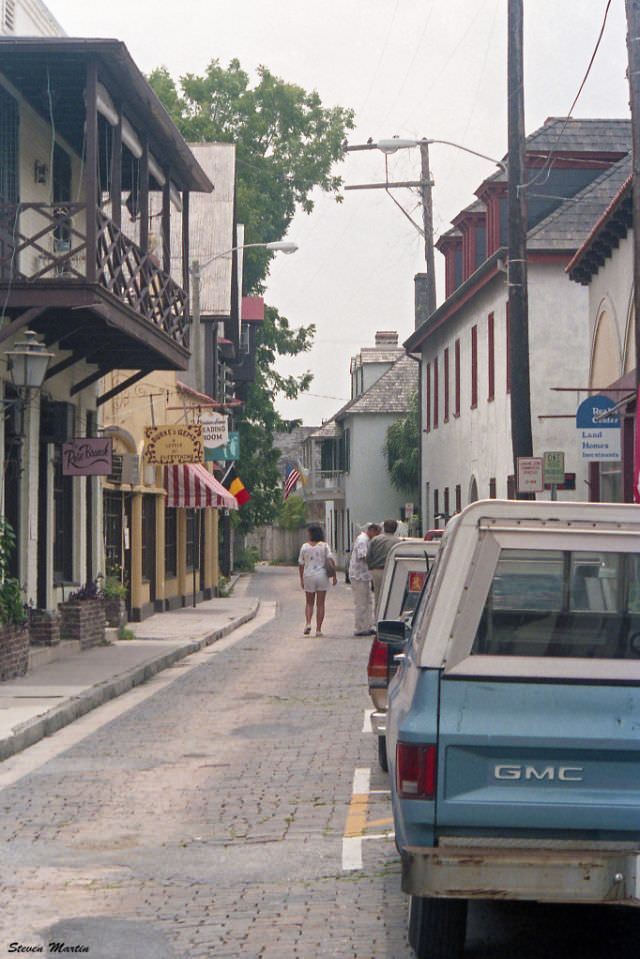
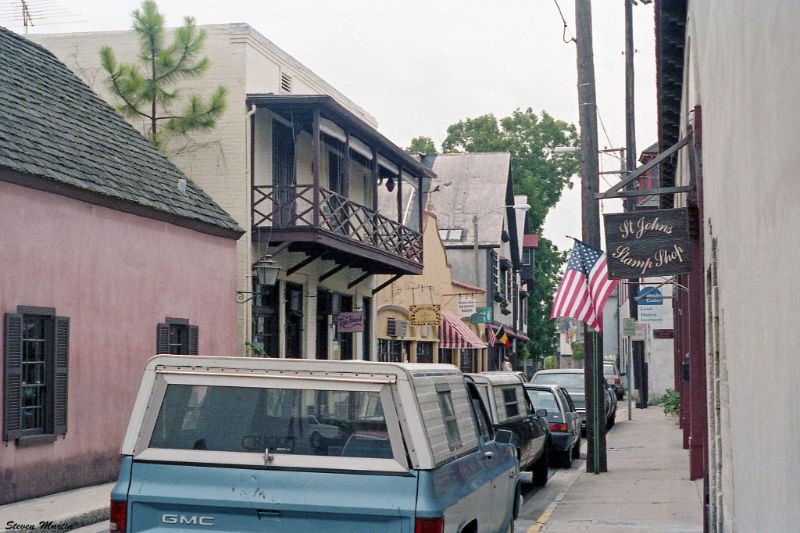
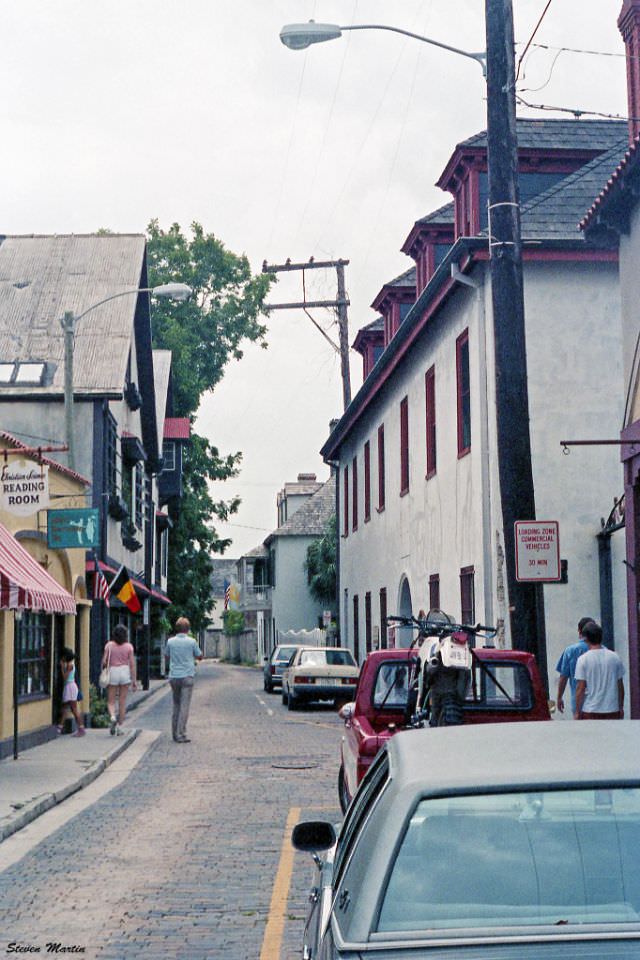
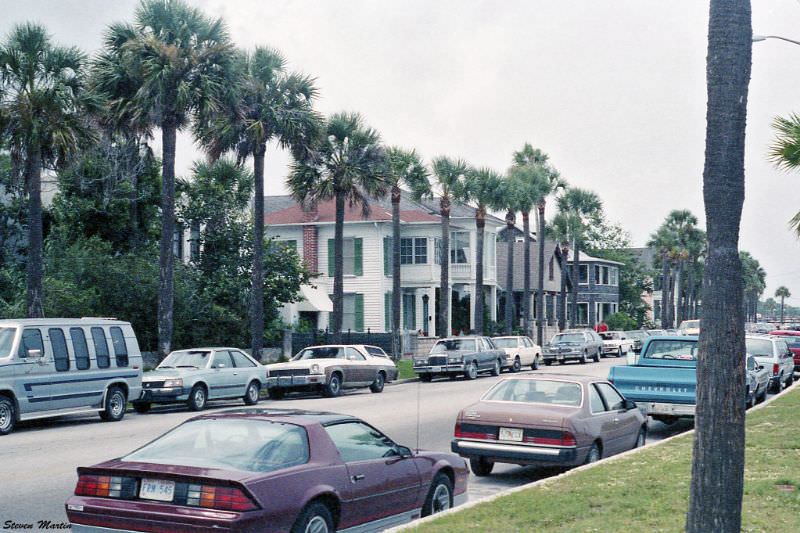
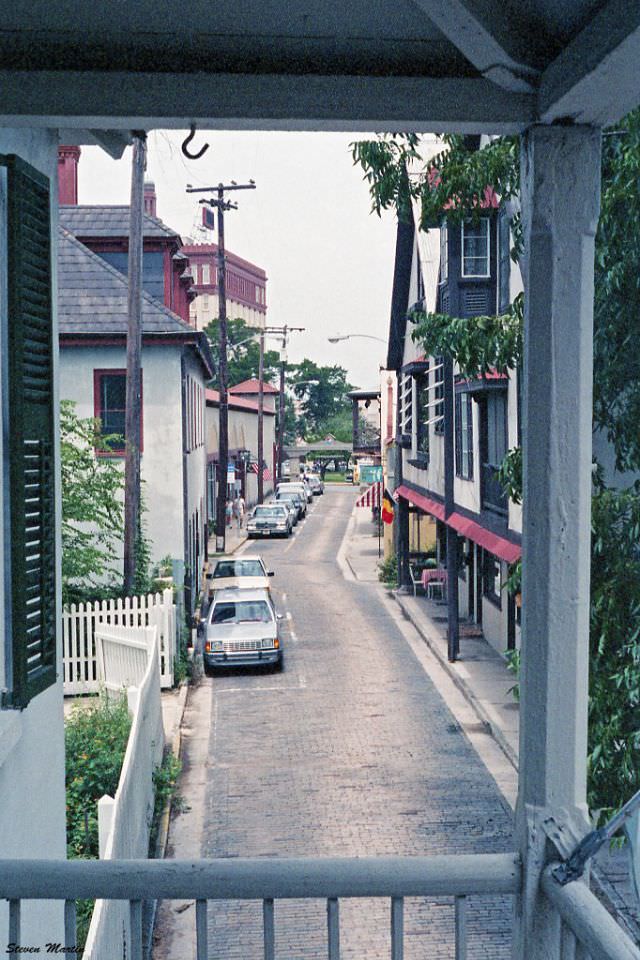
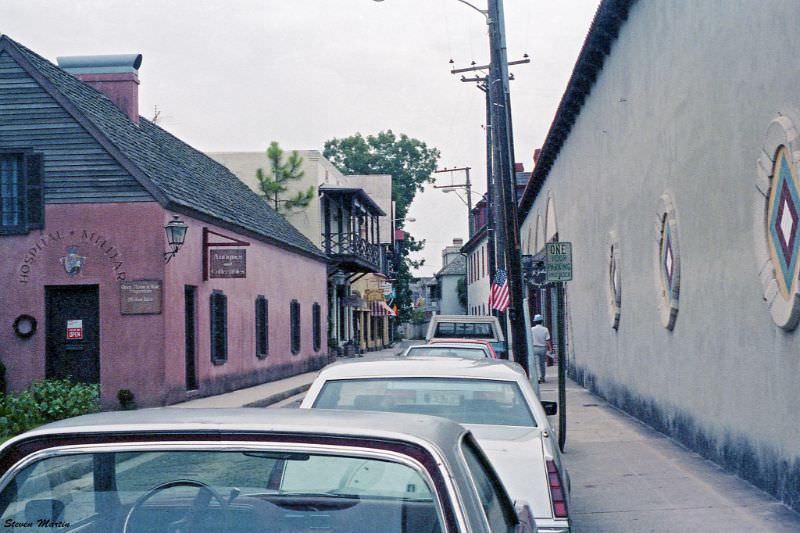
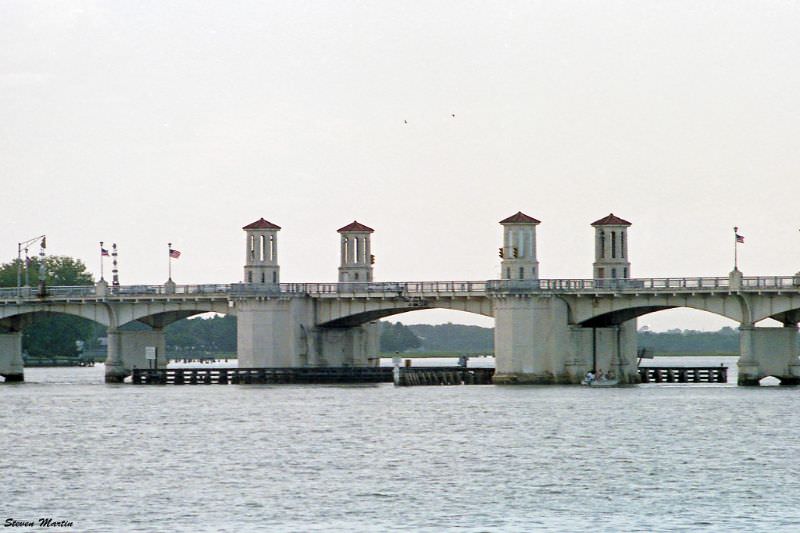
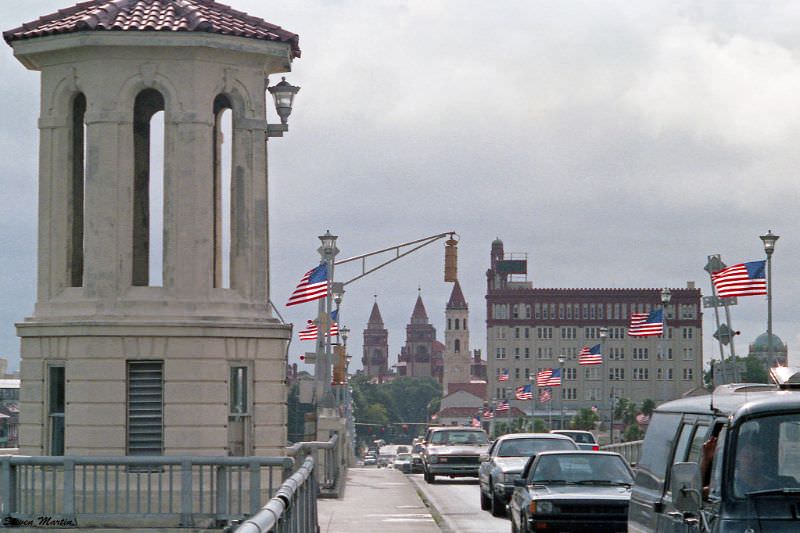
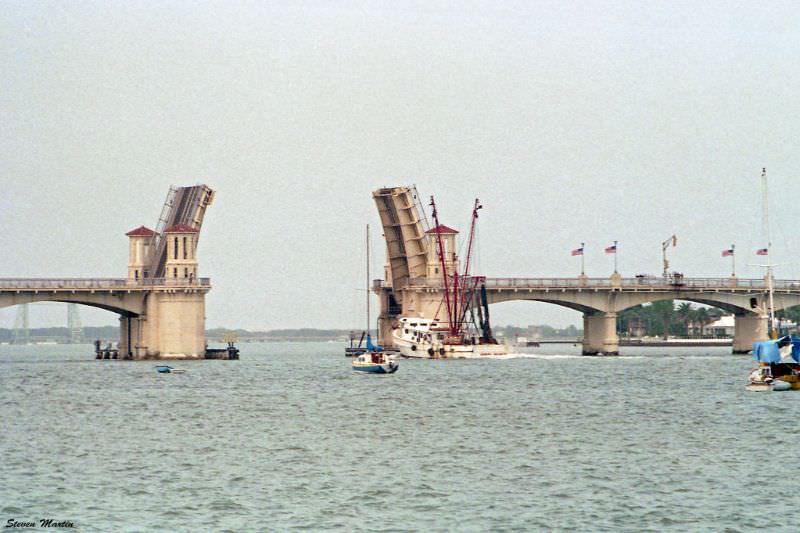
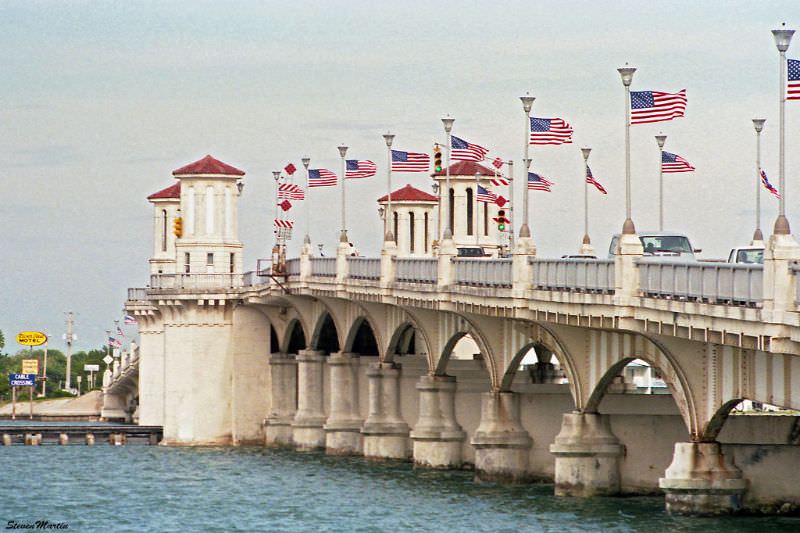
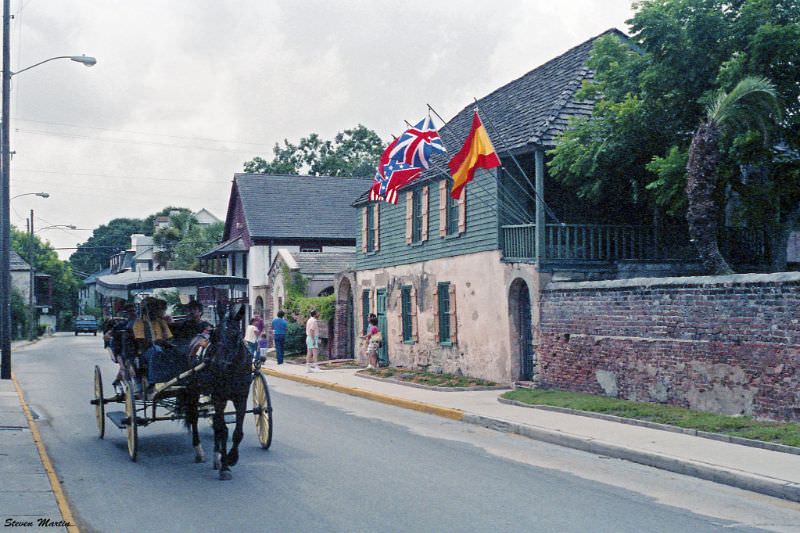
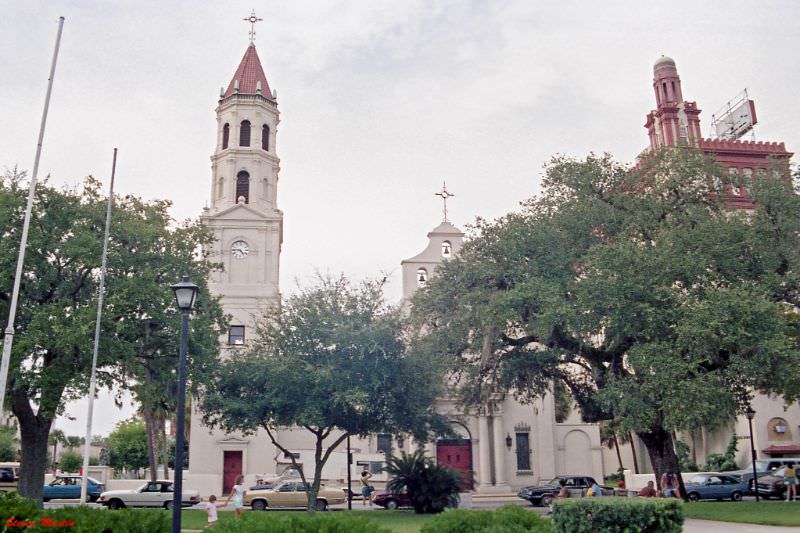
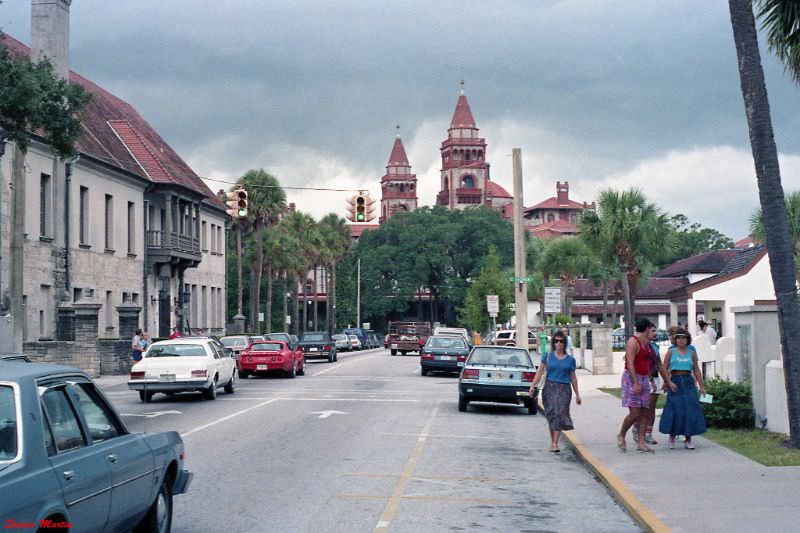
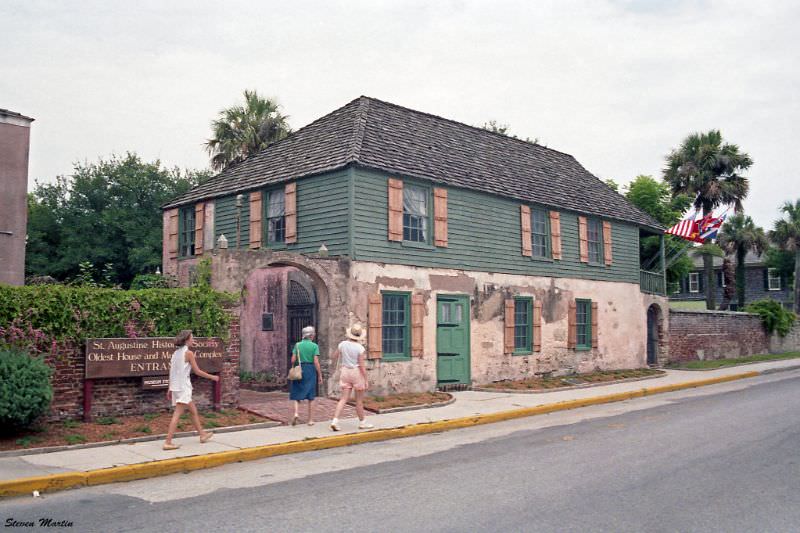
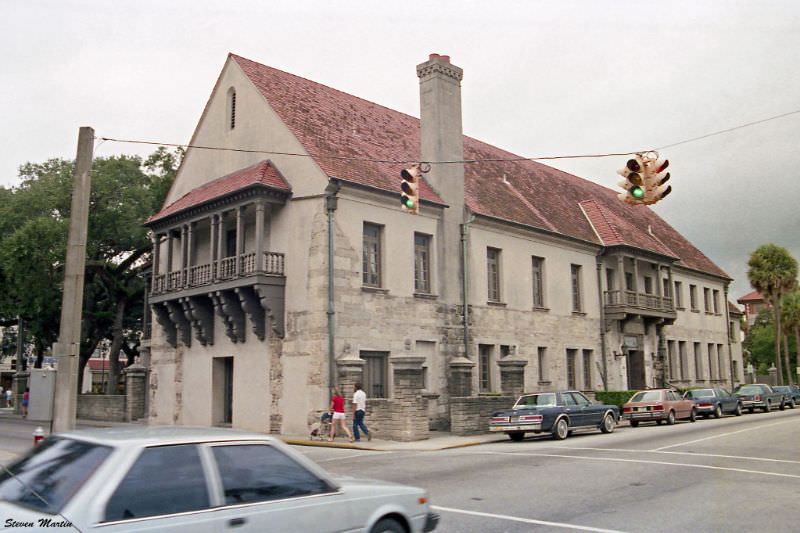
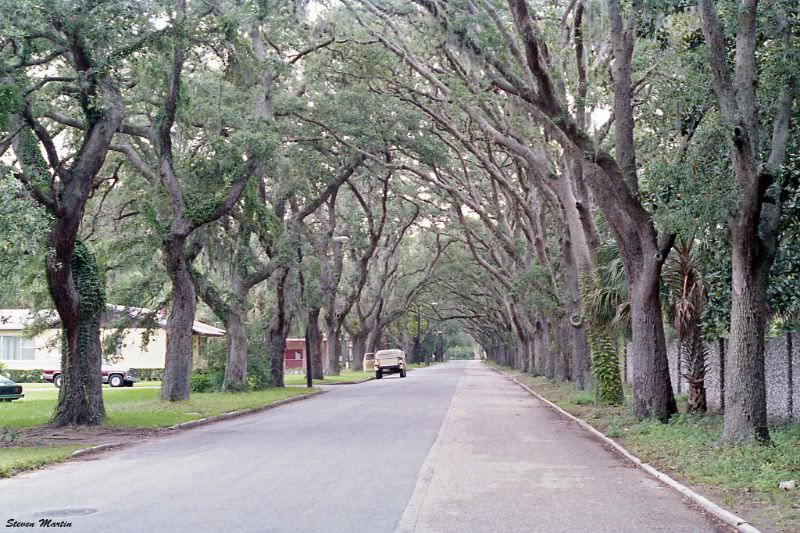
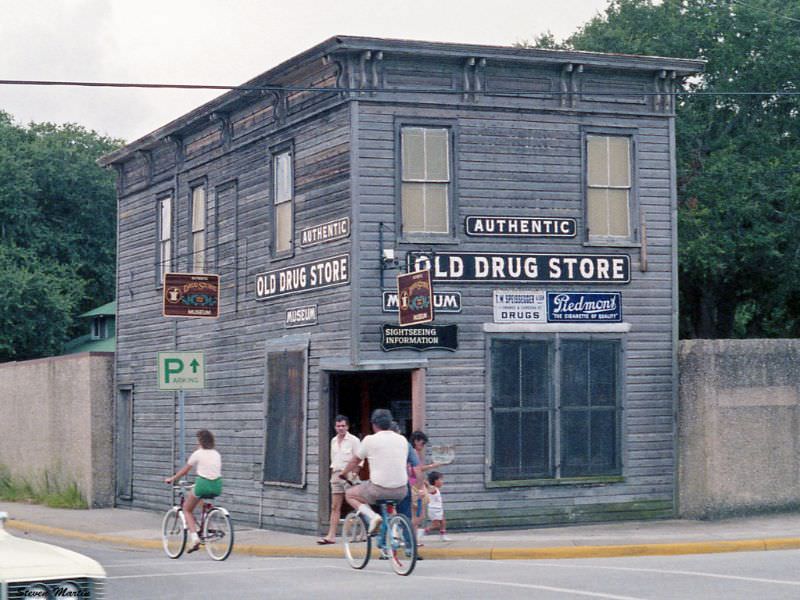
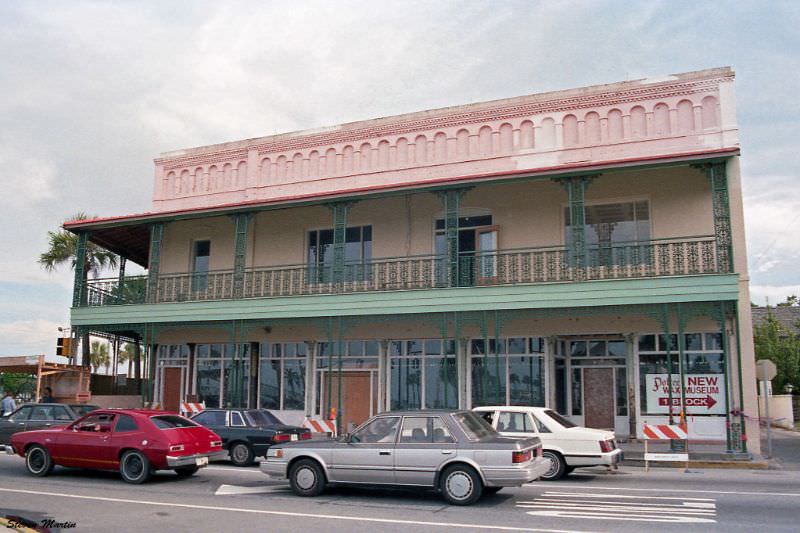
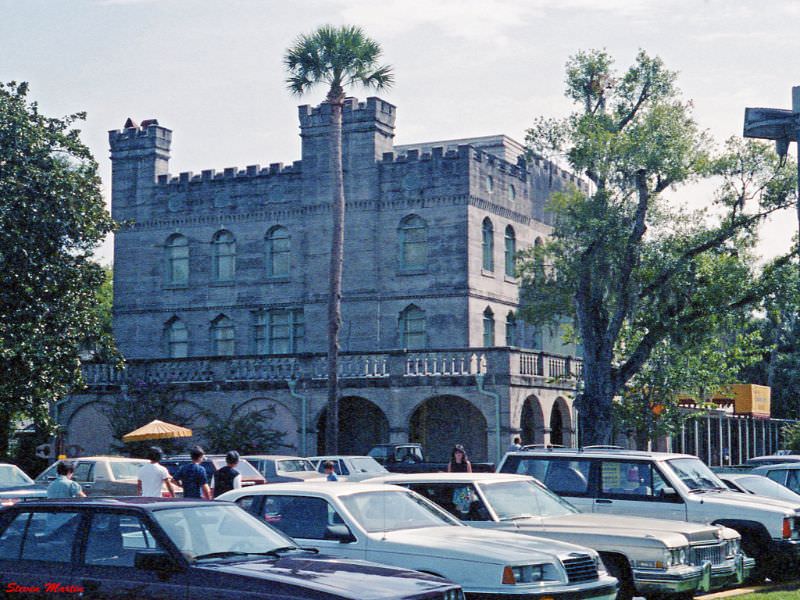
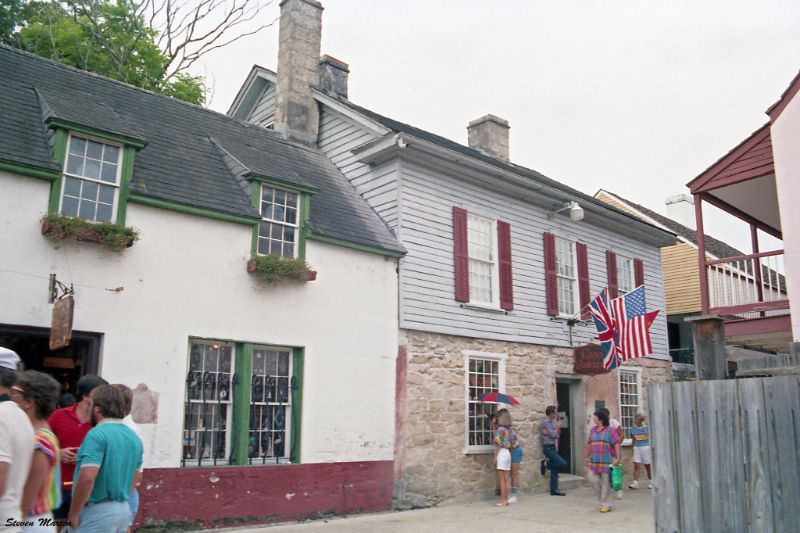
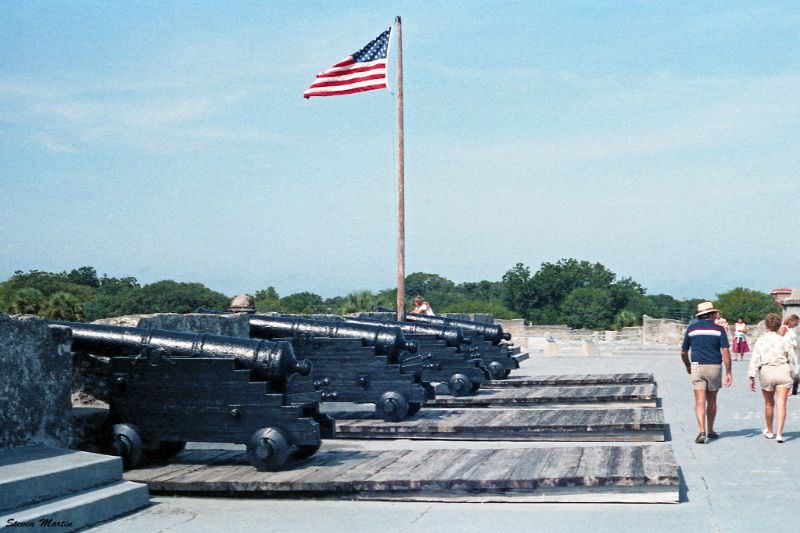
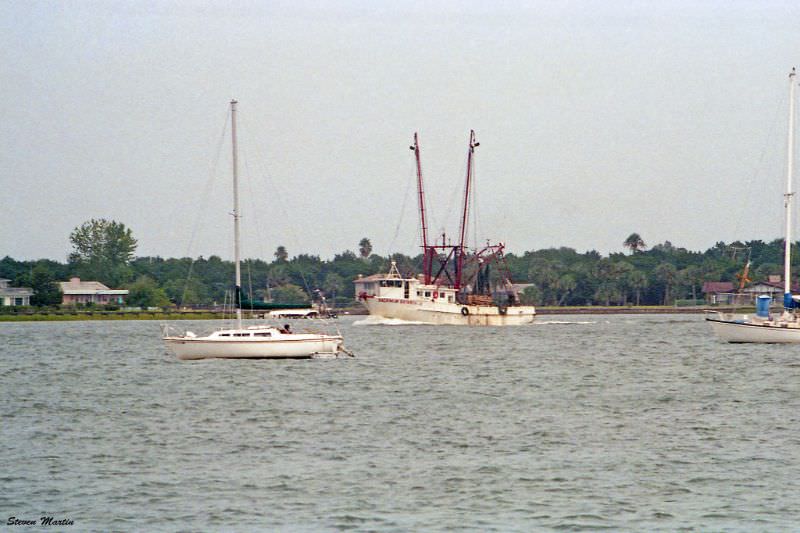
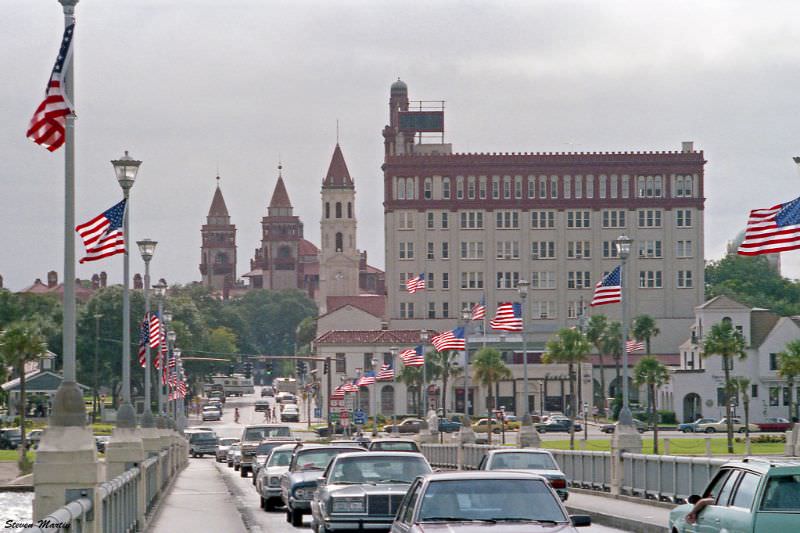
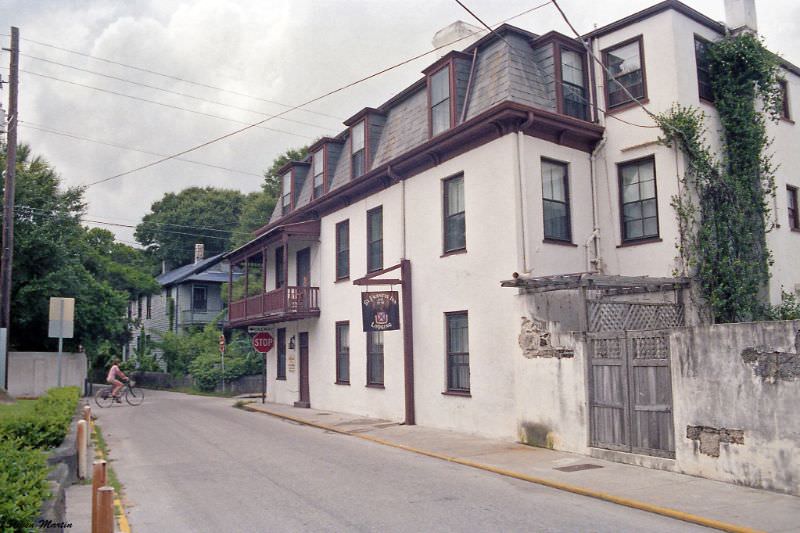
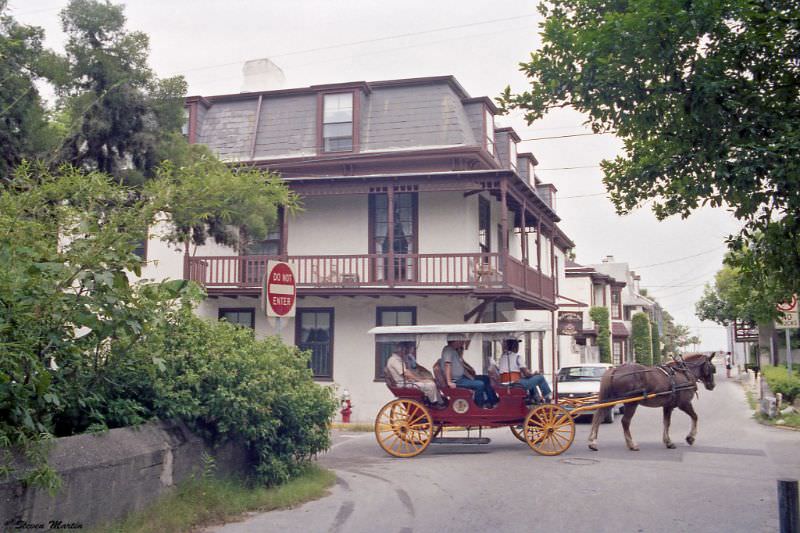
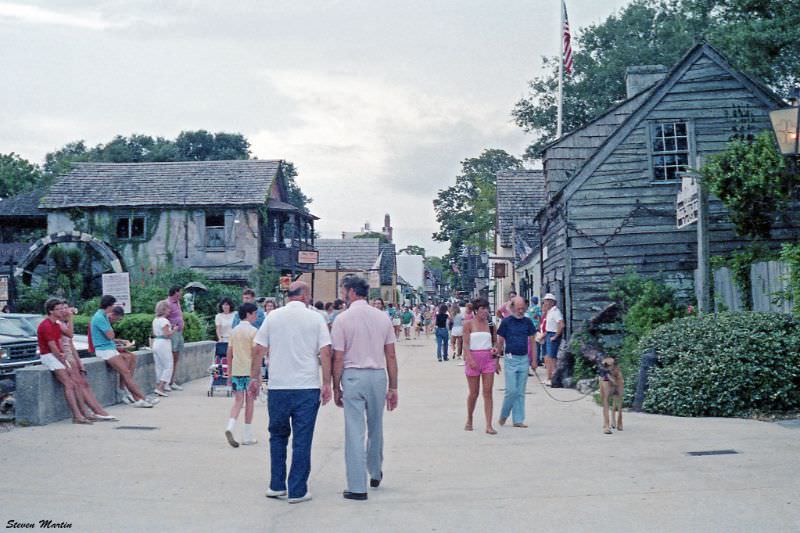
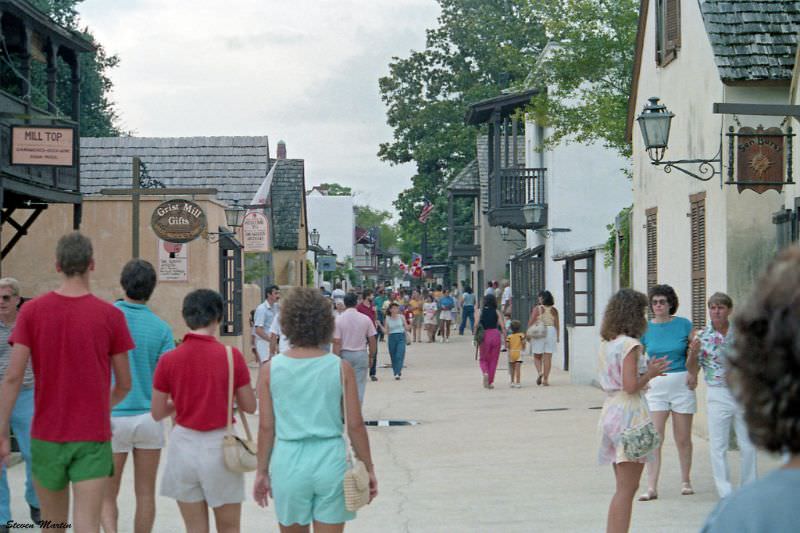
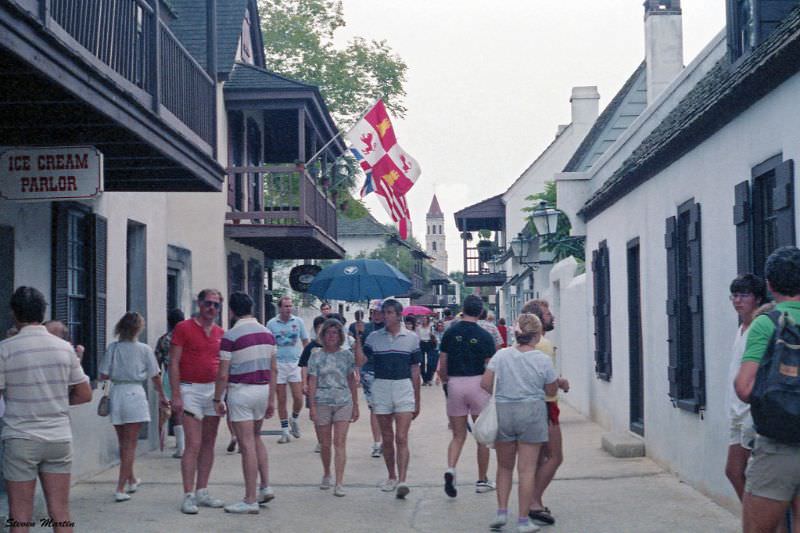
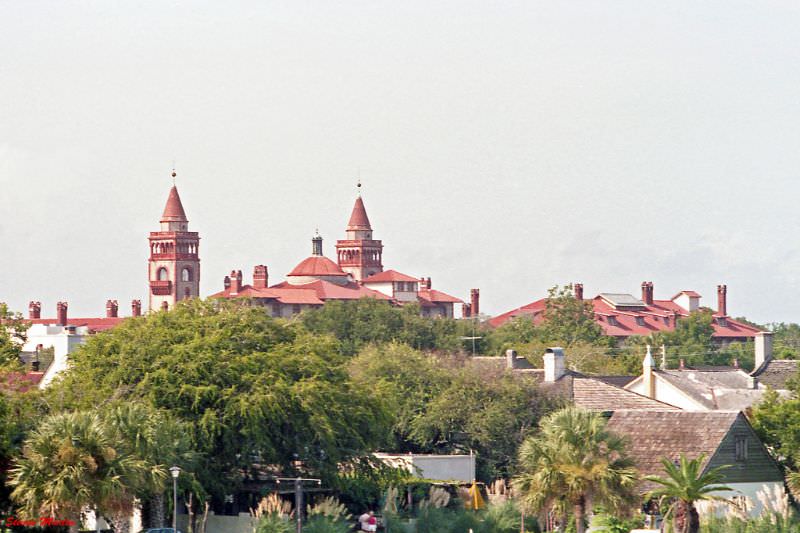
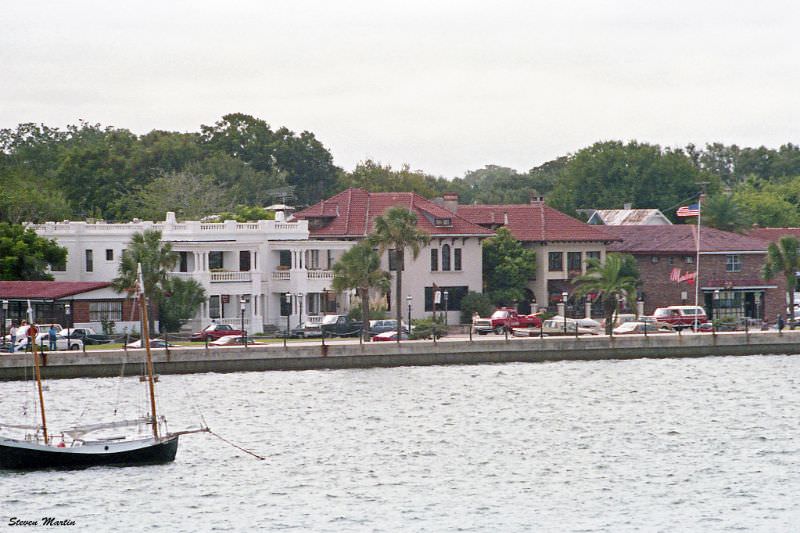

Damn Bro..Looks almost exactly the same to me…
Astonishing how similar the current view looks in comparison to the photos, except for the older cars present in the photographs.
Based on the advertisement on the window, it seems that the wax museum may have recently relocated, indicating that the building might have been vacant during that period.
If I am correct, the wax museum relocated down King Street, one block away during that year. It was moved once again in 2013 to its current location. It is worth noting that this was the first wax museum in America.
For those who are interested in seeing more than still photographs of St. Augustine, the 1987 film “Illegally Yours,” featuring Rob Lowe and Colleen Camp, was shot extensively in the city. Although not considered a great movie, it can still be enjoyable to see what the city looked like back then. Surprisingly, there haven’t been many significant changes since then. The entire movie is currently available on YouTube as well.
Although the movie may not be considered a cinematic masterpiece, it can still be fascinating to observe the different filming locations used in the film. There is a scene in a bookstore or record store where Rob Lowe’s kid brother is employed. The filming was done across the street from where the present-day gas station and Happy Pappy’s Glowing Balls are located. Does anyone know if a real bookstore or record store previously occupied that location?
It seems that the scene in question took place at a real location called “The Music Shop.” The scene appears to have been filmed outside of St. Augustine, possibly in Jax Beach, as indicated by the presence of the church of St. Paul’s By the Sea in the background. A Google search yielded results for “The Music Room” in Jax Beach during the 1980s and 1990s, and the interior shots show “325” above the door. This suggests that the building was located in the first block west of A1A, likely at 325 7th Ave N. It is possible that the building no longer exists, and the current site of the Beach Methodist Church. It may be worth checking old yellow pages from 40 years ago at a Jax Beach public library to verify the listing.
I hear ya! It’s pretty wild to see that there are only vintage cars in these photographs, and it looks like there wasn’t a whole lot of people struggling with obesity back then either, huh?
And the men in little white shorts. It was definitely the era of Richard Simmons and his enthusiastic workout sessions.
Those photos remind me the remarkable job that was done on the Bridge of Lions, which appears to be the one that was opened in 1927.
It seemed like the temporary bridge was there for an extended period, almost a decade.
A glimpse of what many would consider the good old days.